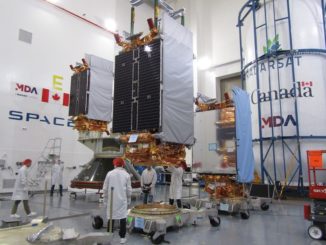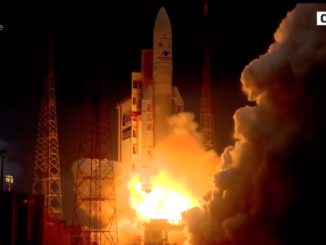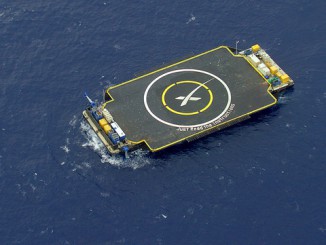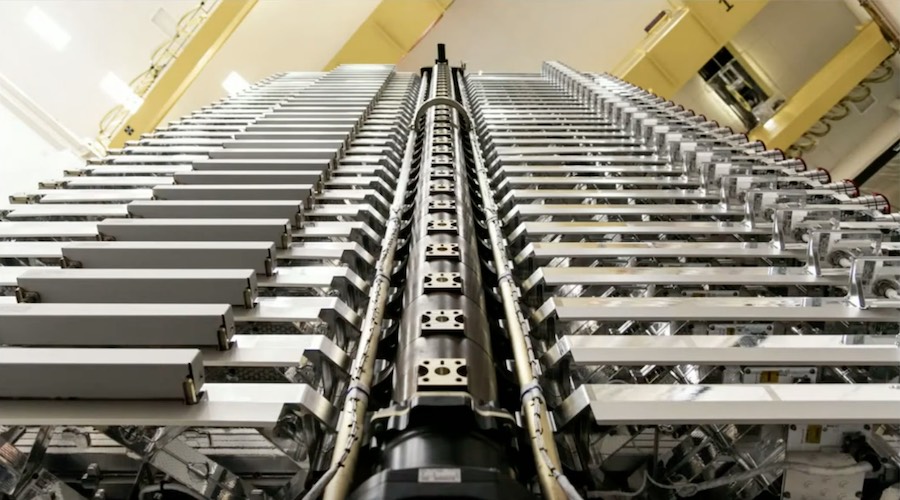
SpaceX is preparing to launch another batch of satellites for the Starlink Internet network from Florida’s Space Coast as soon as April 16, a sign that launch operations at Cape Canaveral could continue at a reduced pace amid the global coronavirus pandemic.
The launch next week is also set to occur weeks after a major competitor to SpaceX’s Starlink network filed for bankruptcy.
The mission is set for launch at around 5:31 p.m. EDT (2131 GMT) next Thursday, April 16, from pad 39A at NASA’s Kennedy Space Center in Florida.
Warning notices released to mariners have been released suggesting the launch is scheduled next week. The mission will mark the 84th flight of a Falcon 9 rocket since 2010, and SpaceX’s seventh launch so far this year.
The flight will also be the ninth launch from Cape Canaveral in 2020.
The military-run Eastern Range, which supports launch operations at Cape Canaveral, remains open amid the coronavirus pandemic. But some missions are facing delays, including at least two SpaceX launches that were planned for March 30 and April 29.
The launch of Argentina’s SAOCOM 1B radar observation satellite was planned March 30 from Cape Canaveral, but Argentine officials ordered a postponement due to travel and work restrictions associated with the pandemic.
The U.S. Space Force confirmed Tuesday that the next launch of a GPS navigation satellite — previously planned April 29 on a Falcon 9 rocket — would be delayed two months until no earlier than June 30 to ensure launch crews would not be exposed to the COVID-19 viral disease.
CNBC reported Monday that six SpaceX employees have tested positive for the coronavirus. SpaceX has not responded to multiple requests for information about the company’s measures to combat the spread of the virus.
For now, SpaceX is proceeding with the launch of additional Starlink broadband satellites, sources said.
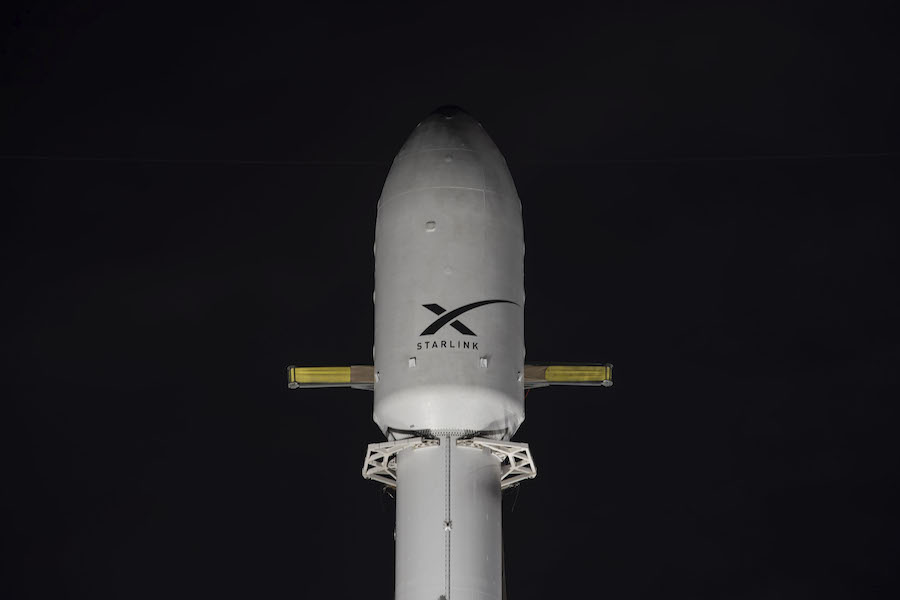
SpaceX has launched 362 Starlink satellites to date, including test versions. Since last May, SpaceX has launched six dedicated Falcon 9 flights for the Starlink network, each with 60 satellites on-board.
On the most recent Falcon 9 launch with Starlink satellites last month, one of the rocket’s first stage engines shut down prematurely. SpaceX said it is investigating the engine problem, and NASA and the U.S. Space Force are participating in the inquiry.
SpaceX is in the unique position of both launch provider and customer for Starlink missions.
The Starlink launch campaign has made SpaceX the operator of the world’s largest fleet of satellites, but hundreds more could launch before the end of this year.
SpaceX aims to deploy more than 1,500 Starlink satellites to provide near-global Internet connectivity, serving businesses, schools, the U.S. military and private citizens. Thousands more Starlink satellites could eventually be launched by SpaceX, which has regulatory approval to operate nearly 12,000 spacecraft to beam Internet signals from space.
Each of SpaceX’s Starlink satellites is built at the company’s spacecraft development site in Redmond, Washington. The flat-panel, solar-powered relay stations each weigh about a quarter-ton, and are designed to climb into an operational orbit some 341 miles (550 kilometers) above Earth using krypton ion thrusters.
The multibillion-dollar project is a core business for SpaceX, which also launches the Falcon 9 rocket family and plans to begin sending NASA crews to the International Space Station as soon as next month. SpaceX is also developing a huge new reusable launch vehicle and space transporter called the Starship.
Elon Musk, SpaceX’s founder and CEO, said last month that the Starlink network will reach the “hardest to serve” Internet customers, and will not be a major threat to established telecom operators.
SpaceX has not publicized connectivity speeds or prices for consumer-grade connectivity through the Starlink network. But Musk gate prospective customers a taste of what they could expect.
“It will be very low latency, and we’re targeting latency below 20 milliseconds, so somebody could play a fast response video game at a competitive level,” Musk said in early March. “That’s the threshold for latency. And bandwidth? The bandwidth is a very complex question. Let’s just say somebody will be able to watch high-definition movies, play video games, and do all the things they want to do without noticing speed.”
Musk said SpaceX is not currently thinking about spinning off the Starlink project to form another company, adding that his main goal is ensuring that Starlink is a viable business after previous attempts to build large constellations of communications satellites in low Earth orbit ran into trouble.
“We need to make the thing work,” he said. “It’s real important to just set the stage here for LEO communications constellations. Guess how many LEO constellations didn’t go bankrupt? Zero.”
OneWeb announced last month it was filing for bankruptcy after launching the first 74 of a planned fleet of nearly 650 Internet satellites.
“Not to bankrupt,” Musk said. “That would be a big step — to have more than zero in the not bankrupt category.”
Email the author.
Follow Stephen Clark on Twitter: @StephenClark1.

